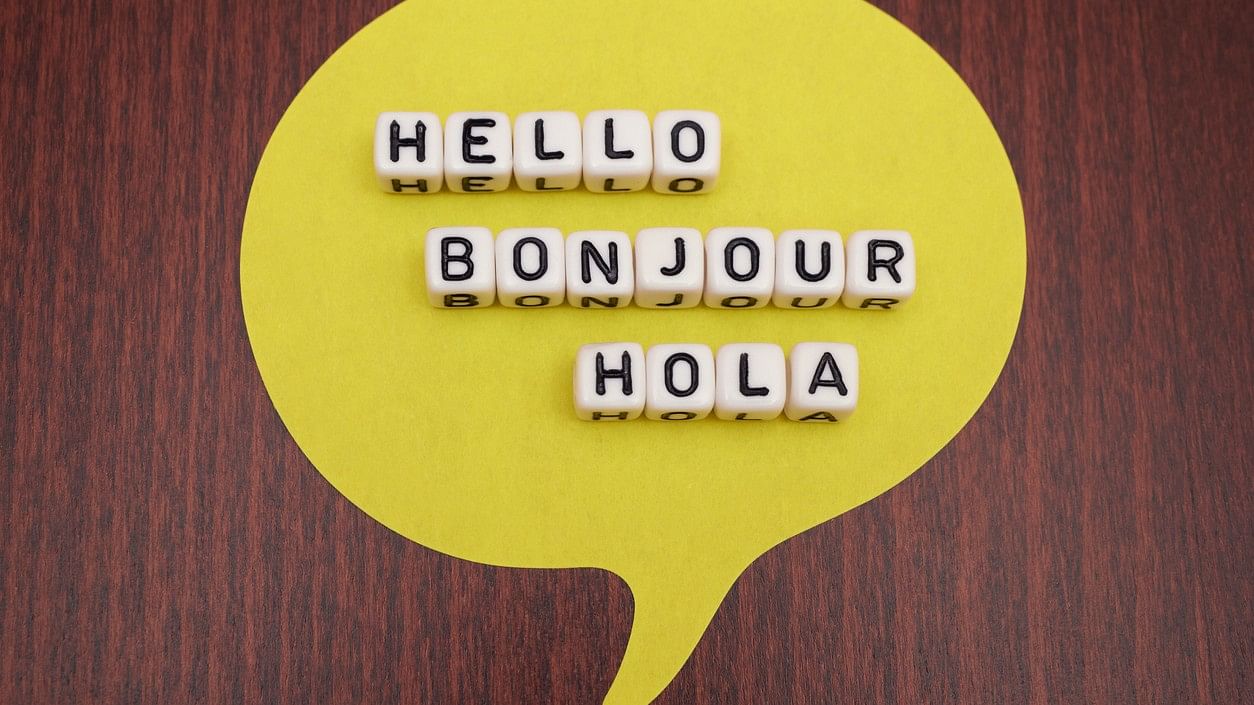
Representative image
Credit: iStock Photo
You ask someone something and they grunt in response. What does that mean? They agreed? They disagreed? They hated what you said? They weren’t listening? Or they simply don’t want to talk to you? Yikes!
Then there’s the infamous Indian nod. It’s not up and down. It’s not even the universal shake of the head that goes side to side. Oh no! It goes from one shoulder to the other. The poor American or European is totally bemused. What are we saying? And that’s where words step in.
You know how much trouble you have sometimes when Dumb Charades throws up a challenge! Ancient cavemen must have had an awful time communicating. Imagine the woman of the cave telling the hunters that they needed to bring back some mint to spice up the pot…! And thus, the need arose for something a bit more specific than waving arms around and making faces.
All of today’s languages are thought to have evolved from a single language that was used around 8,000 years ago which we call the Proto-Indo-European (PIE). Modern research suggests that all the European languages and the languages of the Indian subcontinent evolved from PIE which was spoken in the area around central Turkey. A British judge in India, Sir William Jones noticed similarities between Sanskrit, Latin and Greek (e.g. ‘pitar’ and ‘pater’) and wasn’t content to believe that that was just a coincidence. By tracing the evolution of these languages through the ages, both the amazing similarities and the separations have been brought to light. Most researchers now believe that the original speakers were nomadic shepherds which explains the spread of the language around the globe. As people migrated all over the world, the PIE language eventually split into smaller language families — about 10. New environments and new experiences would have influenced the further development of each of these. Studying PIE also enabled linguists to understand the lifestyle of those people who spoke it. They had words for wheel and axle — suggesting that they used carts and were nomads. They even had a word for in-laws, but referring only to the women’s side of the family — suggesting that they were definitely patriarchal!
As with most things when we’re talking about ancient civilisation, there are alternate theories. One says that language emerged in clusters all over the world and similarities arose only when people began to engage with each other. There grew the need for communication between cultures as people began to travel for trade or even conquest. For example, ‘sheep’ came from the Old English word ‘scēap’. After the Norman conquest, the French word, ‘mutton’ began to be used for the meat served at the tables of the wealthy French conquerors while sheep was used for the flocks tended by the poor shepherds. So, a new word got added to the language we now call English. And of course, we all know of the Indian contributions, ranging from ‘bazaar’ to the very recent ‘aiyyo’!
We’ve talked about why language evolved. Now what about the ‘how’. There are several interesting theories about how language came to be. The Tower of Babel theory that all languages came from one common source goes well with the PIE language theory; while the Proto Lingual theory says that there were language clusters that all originated separately. Noam Chomsky’s language theory says that humans possess an innate knowledge of language, grammar, vocabulary and syntax so evolution itself has equipped us to speak a new language efficiently. Er…! The Evolutionary theory says that language evolved just as everything else evolved — over thousands of years.
There are for a few fun theories too. a) The bow-wow theory — no prizes for guessing that. Language evolved from mimicking animal sounds. b) The pooh-pooh theory argues that language evolved from involuntary sounds we make such as cries, sighs, and groans. c) The ding-dong theory is one I particularly like. It says that early languages developed from onomatopoeia (words that imitate or suggest natural sounds). Don’t you just love words like ‘splash’ and ‘boom’? d) The Yo-He-Ho theory says that language developed from the sounds we naturally make when involved in manual activity. Would you pull a heavy log in silence? Of course, not!
Well, whichever theory appeals to you, they are probably all at least partly true. Words!! Aren’t they fascinating??